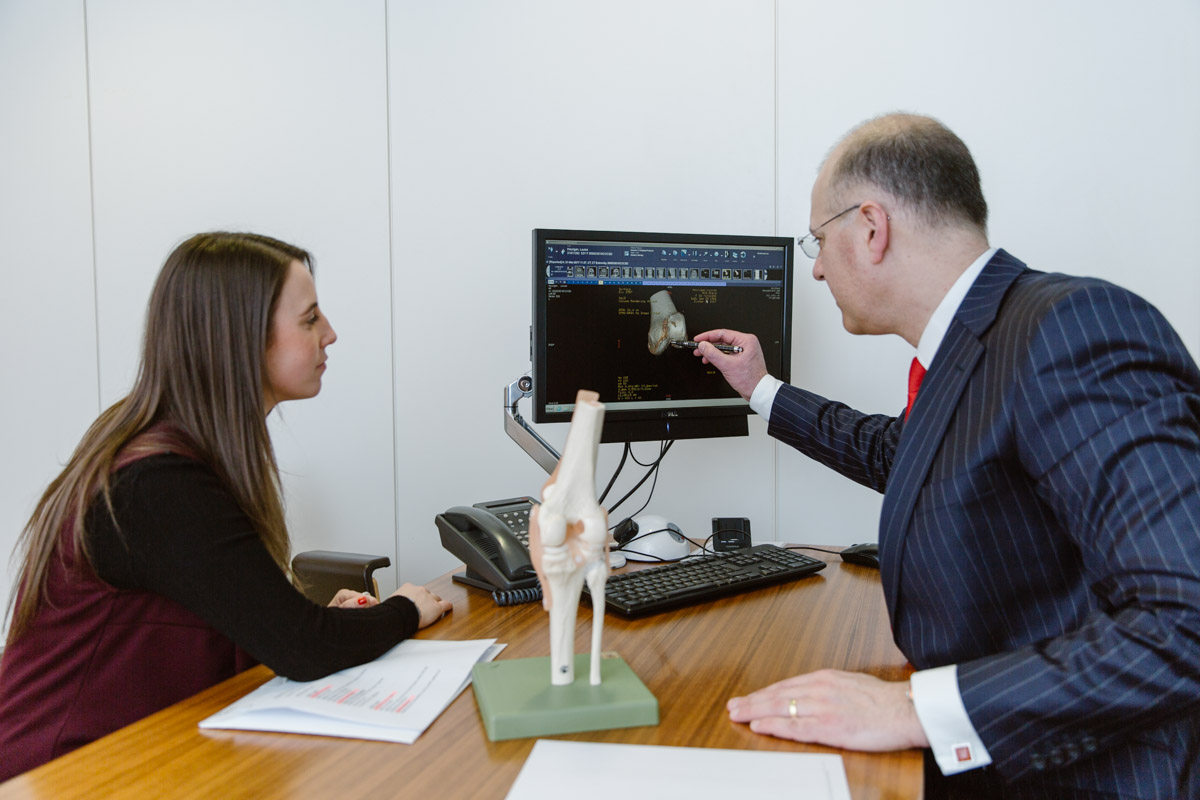How is knee replacement surgery performed?
Knee replacement surgery is a significant undertaking, and not something to be taken lightly. It involves pain, hassle and potential risks, and extensive post-operative physiotherapy rehab is required afterwards. Knowing when it is appropriate to go ahead with knee replacement surgery is essential, as is having a full understanding of what is actually involved.
Knee replacement is performed under either a general anaesthetic (so that the patient is asleep) or under a spinal anaesthetic (where the lower half of the body is numbed), and the decision as to which of these any paitent might opt for is very much a personal choice after discussion between the surgeon, the patient and the anaesthetist.
An approximately 20cm incision is made lengthways through the skin at the front of the knee. An incision is made through the soft tissues at the front of the joint and the joint itself is then opened up, with the kneecap being turned sideways and everted, out of the way.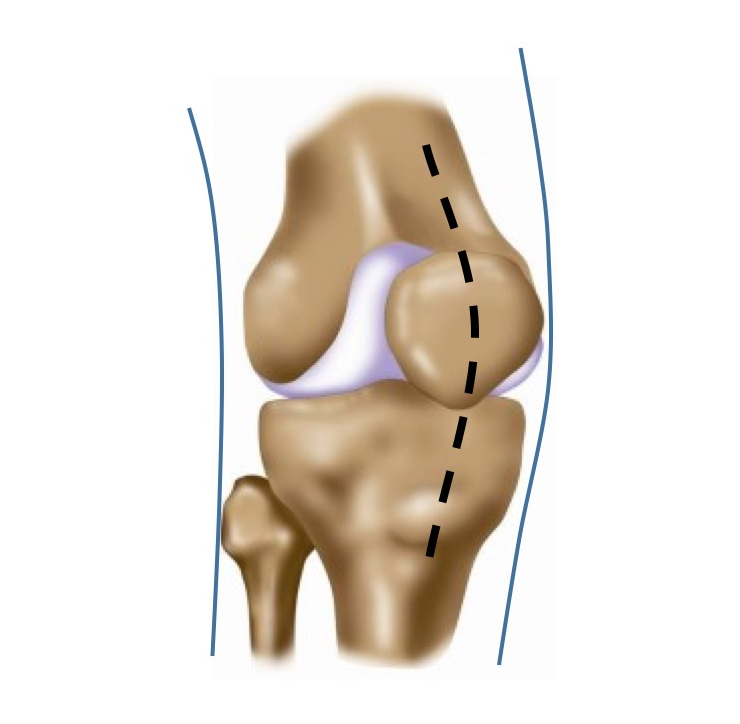
The surfaces of the bones at the bottom end of the femur and at the top of the tibia are cut with an oscillating saw and sculpted using special jigs, so that the surfaces of the bones are contoured. A thin layer of bone (with whatever remaining cartilage might still be present) is also removed off the back of the patella (the kneecap).
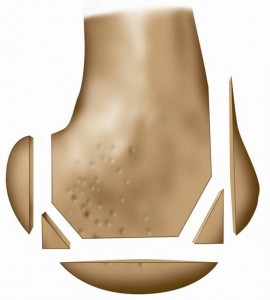
The collateral ligaments at the side of the knee are always left in place. The anterior cruciate ligament (ACL) is always removed. The posterior cruciate ligament (PCL) may be left in place or it may be removed, depending on the type of prosthesis being used (CR vs PS) – CLICK HERE to learn more.
Metal prostheses are then inserted onto the end of the femur and the top of the tibia, and these are fixed to the bone with special bone cement, which sets like rock within less than 10 minutes.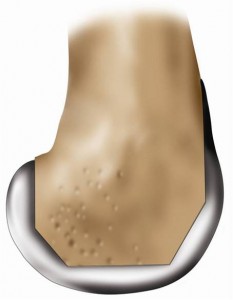
A rock-hard plastic (ultra-high molecular weight polyethylene) tibial insert is then placed as a spacer inbetween the femur and tibia, and a plastic domed surface is cemented onto the back of the kneecap.
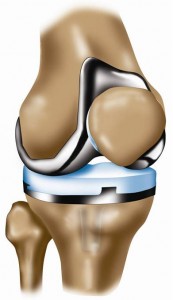
The soft tissues at the front of the knee are then stitched back together in multiple layers using very strong sutures, and the skin is then closed either with dissolvable sutures under the surface of the skin, combined with skin glue on the actual surface, or else with multiple metal staples (which are then removed 10 to 14 days later).
The whole procedure normally takes somewhere in the region of about 80 to 90 minutes or so.
Knee replacement animation
This animation shows how a total knee replacement is performed, using a standard off-the-shelf posteriorly-stabilised total knee replacement prosthesis.
Partial knee replacement animation
This animation shows how a medial unicompartmental partial knee replacement is performed using custom-made 3D-printed cutting jigs with a Conformis iUni custom-made prosthesis.
Patellofemoral arthroplasty animation
This animation shows how a patellofemoral partial knee replacement is performed using custom-made 3D-printed cutting jigs with the Kinematch custom-made patellofemoral arthroplasty prosthesis from Kinamed.
How do I get my knee assessed?
CONTACT US if you would like to arrange an appointment with a full assessment of your knee.
